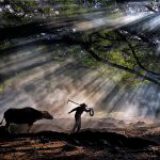Technology changes with time, but the fundamentals and recipes in photography remains. This article was first published in 2009, revised in 2018
“The traveler sees what he sees, the tourist sees what he has come to see. The whole object of travel is not to set foot on foreign land; it is at last to set foot on one’s own country as a foreign land.”~ Gilbert K. Chesterton
“Who lives sees much. Who travels sees more.” ~ Arab proverb
“The world is a book, those who do not travel read only one page.” ~ Saint Augustine (354-430)
“Travel makes one modest. You see what a tiny place you occupy in the world.” ~ Scott Cameron
“To feel at home, stay at home. A foreign country is not designed to make you comfortable. It’s designed to make its own people comfortable.” ~ Clifton Fadiman
“The traveler was active; he went strenuously in search of people, of adventure, of experience. The tourist is passive; he expects interesting things to happen to him. He goes ‘sightseeing.’” ~ Daniel J. Boorstin. The Image: A Guide to Psuedo-Events in America, 3.2, 1961
“A good traveller has no fixed plan and has no intent on arriving.” ~ Lao Zhu (Ancient Chinese Philosopher, c 604 B.C.)
“If it is better to travel than to arrive, it is because traveling is a constant arriving, while arrival that precludes further traveling is most easily attained by going to sleep or dying.” ~ John Dewey. Human Nature and Conduct: An Introduction to Social Psychology, 4.1, 1992.
From my survey among most of my students, travel photography is arguably one of the most liked topics in photography. In itself, travel photography is also a specialization in Professional Photography. From the above quotes, one can imagine how travel photography changes the lives of many people, especially their perception of what life is.
What exactly is travel photography? How do we define travel photography? Do we simply just buy a ticket, fly to some place out of the border of your country, take out your camera and snap whatever you see? Or for some, could it be merely snapshots of your loved ones with some famous mountains in the background? Can travel photography be defined?
Certainly it can be defined. Strictly defined and adapted from The Royal Photographic Society of Great Britain, travel photography is documentary record photography with a travel connection. For example, it may record a journey, a travel experience, a place, which may include its people, a collection of items specific to a place, a culture in its natural state or an activity carried out at a place. The distance travelled to compile the portfolio is not important. The photography can be taken in any country in the world including Singapore. Manipulation by digital or other means, which SIGNIFICANTLY alters the truth of the situation or event, is unacceptable. With this definition, one can be more focused on this specialization call travel photography.
From my years of being in the shoes of a travel photographer, I would like to share with you the following pointers that could be useful in your journey of travel photography.
1: Research and Plan
Know yourself; know your terrain, half the battle won. It is important to do research on the place you are going instead of going there and lose your way. You do not have the luxury of time to spend more than 3 months to slowly discover a place unless you decide to quit your job. If you hardly have less than a week, it is important to know what the things you are expected to see and what are the places you should visit. There are many guide books on the shelves of the book stores; at least they are mostly updated. If you borrow the guide books from other sources, do make sure that they are not outdated or else you will end up in a different place. It is also important to know who to contact if you need help, such as the contact number of the embassies.
2: If possible, get a local guide
If you are going on your own or with a few friends, you may like to hire the services of an experienced local guide or driver who knows where are the places you should not miss. Do tell them to bring you to places where the locals often go, as this will shed new light to how the locals live. If you are on those packaged tour groups with more than 40 people on the tour bus, this is probably more of a family sight seeing holiday. Hence, this is very much dependent on what type of tour you are looking at.
3: Things to shoot
For myself, I have a checklist of things to look out for when I do my travel photography. I would go to the book shop, to the library or search the internet for resources or photographs for reference. Samples of my checklist can be found in the subsequent pages. The checklist is as below:
- Buildings & Architecture
- Food
- Portraits and people
- Plants
- Transport
- Night Life
- Leisure and sports
- Scenery & landscape
- Motifs
- Religion
- Places of interest and landmark
- Small things and signages
- Alleys
- Souvenirs and handicrafts
- Cultural performance
- Animals
4: Stay healthy
The worst thing that can happen is to travel while you are sick. A terrible sinus can ruin your morning shoot. A tummy ache from eating the unhygienic food from the roadside store (too tempting to resist) can cause much inconvenience especially in a place where toilet facilities are rare. To travel without adequate medicine supply is as bad as trying to fry a fish in a wok without oil but water only. If you are for the first time going to places of high altitude, such as 3800m above sea level, you may like to be mentally prepared for breathlessness and spinning headache. I usually bring adequate supply of medicines, which I can share with my compatriots if they fall sick too.
5: Logistics
Heard of the cruel cycle of digital travel photography? It goes something like this….
No power supply = no charging of batteries = batteries flat = no photography
I always ensure that I will stay in a reasonably good hotel with adequate and constant power supply. The worst that can happen is while one try to save a few hundred dollars, stay in some crappy hotels that shut down power supply from 10pm to 6am, and next comes one of the best sunrise ever by the lake with boat rowers coming towards you out from the fog, and your battery is flat! I also bring along the multi socket plug so that I can charge several devices at a go. I bring along 2 sets in case anyone of them got smashed in the luggage.
I also ensure that my transport is good to last the trip. There was once, due to peak season, we had to make do with a reasonably “good” vehicle which had tyre threads that seem to be smoothened. We had to pray we do not encounter slippery curbs.
6: Ethics
“To feel at home, stay at home. A foreign country is not designed to make you comfortable. It’s designed to make its own people comfortable.” ~ Clifton Fadiman
It is important to respect the ethics of the people in different places. What may seem disgusting to you may be a norm for them. For me, I just photograph and move on, do not make any negative comments which may make them unhappy.
7: Be mentally sane during long journey
The longest journey I have tried is to leave a town at 6am and reach another town at 12 midnight in Northern Xinjiang, China. Another long journey is to travel through the Taklimakan Desert in Southern Xinjiang, China. It is known as the Death Desert highway, as there is simply not much existence of any life along the highway, except for scenes of dunes after dunes. I can choose to be constantly on the lookout for subjects and shoot through the window of the moving bus, using Aperture Priority mode, ISO800 and with the biggest aperture. But there will be time when you are sick of shooting the dunes, and you have 6 more hours of travel journey. What I usually do is to bring along a few movie DVD. 6 hours is more than enough to watch 3 shows, and you will be amazed at how time flies and your mood remain good. For better mood, try watching MR BEAN DVDs.
8: Backup
You spend so much time, money and effort in getting the photographs. It is important to bring along portable external hard disks to store your images. Do expect to have about 4GB to 8GB of JPEG images per day. This is why I do not shoot with RAW files, as the space will be horrendous. I also bring along backup DSLR bodies and lenses. For less important trips, I will bring along the digital compact camera as a backup.
9: Travel and Shoot wisely
What to bring along for the trip? I prefer to travel light; hence I usually have my DSLR body, 10.5mm DX fisheye, 12-24mm DX lens and the 18-200mm VR DX lens. I have seen photographers bringing along 8kg load of equipment with the various f2.8 fast lenses. If you intend to go for a trekking tour and without a Sherpa to help you, and you do not have a strong physique, it may not be advisable to tug along the 8kg load of equipment. Know your limits!
10: Time of the day
Our wakeup call is usually 4.30am, especially if we had to travel long distances to our destination to photograph the sunrise or if the location experience very early sunrise. The better time to photograph with good lighting is the few hours after sun rise and the few hours before sunset. These are the time where we often experience that warm golden light. Midday sun tends to give harsh lighting which can wash out details, hence the need for ND4 filters.
11: Select pictures everyday
I try to make it a point to select my better pictures everyday instead of waiting to do so when I get back to Singapore. Procrastination is something to be avoided. I have experienced it before. There is always the excuse “I have no time to run through so many images”, and before you know it, your next trip is coming.
The pointers above are not exhaustive but if you bear them in mind and study the case studies below, travel photography is enjoyable.
Buildings & Architecture
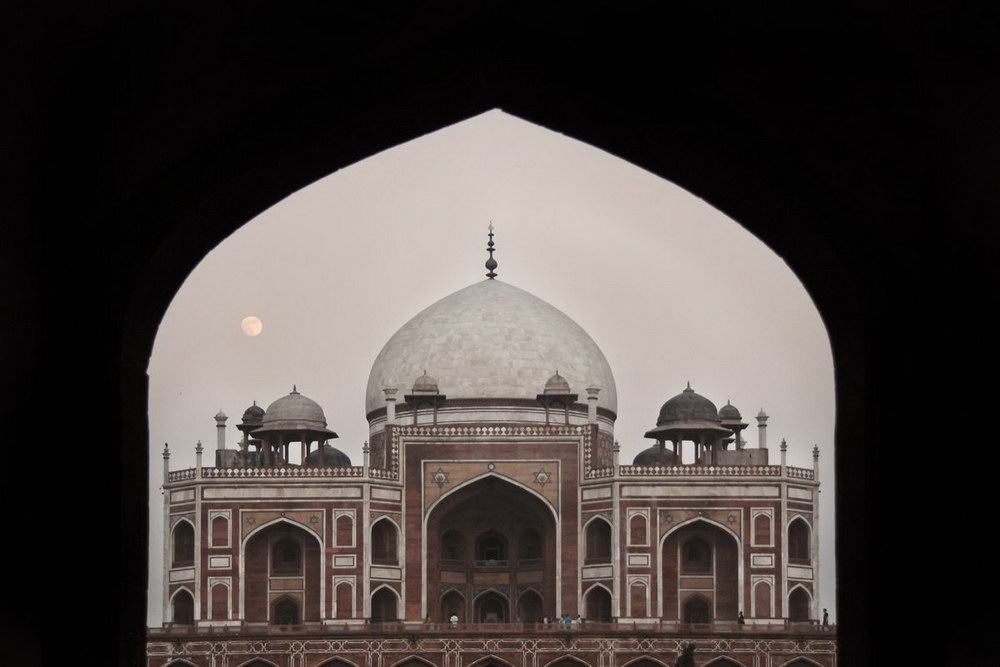
Matrix metering, Daylight White Balance, ISO500, Aperture Priority Mode, Shutter speed 1/125s, Aperture f4.5, 18-200mm, EV -1.0
Buildings and architecture from past and present do reflect about a country’s unique culture. Great buildings or architecture from the past reveal a country’s past splendours and might, while new modern sky scrapers or refurbished old buildings reveal a country’s economic strength and effort in architectural preservation.
Food
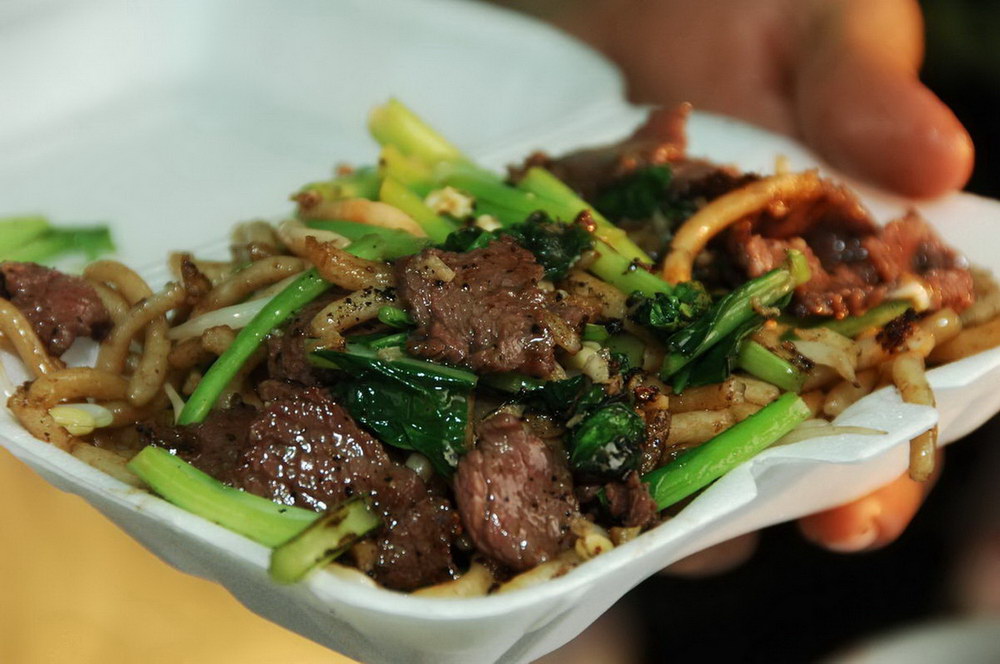
Matrix metering, Daylight White Balance, ISO400, Program Mode, Shutter speed 1/160s, Aperture f6, 18-200mm
Try to photograph food which is unique to the country. For Singapore, one can easily identify food like Char Kuay Teow, Rojak etc. I usually try to take pictures of the food before I eat them. The above pix is a takeaway Vietnamese noodles fried with beef, from the road side stall. Well, the takeaway is not mine but for a local Vietnamese, I just happen to pass by and request to take a shot.
Portraits and people
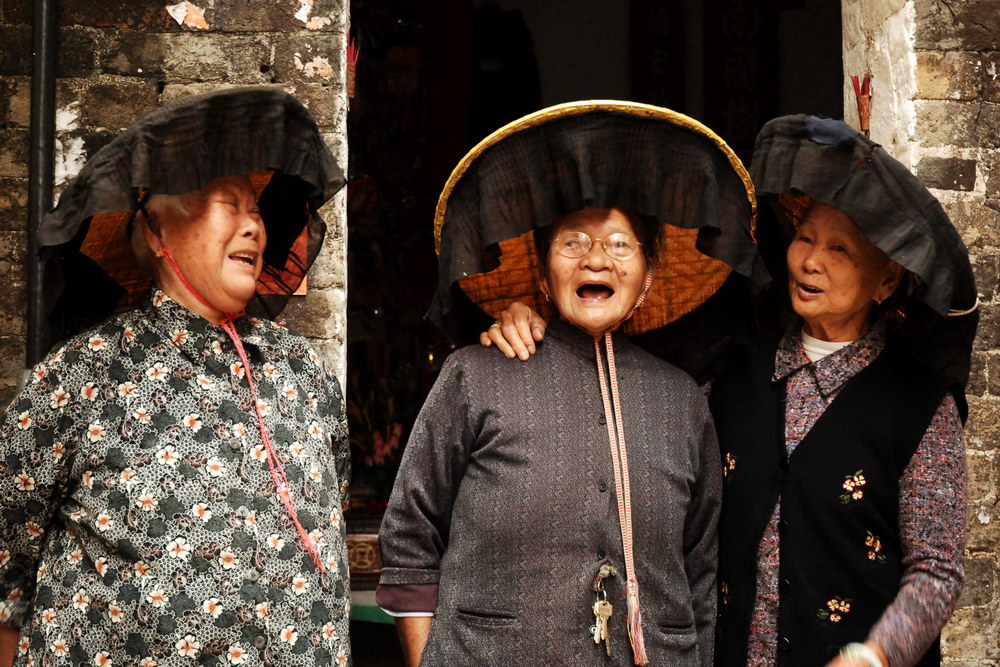
Centre weighted metering, Daylight White Balance, ISO800, Aperture Priority Mode, Shutter speed 1/80s, Aperture f4.2, 18-200mm
Try to explore both the modern and rural side of the country. The above picture was taken in the Northern Territories of Hong Kong and I had to take a long journey via the MTR and by rail to reach this village. These three grand old ladies are probably the last few who still wear the old dresses and sport their unique hats.
Plants
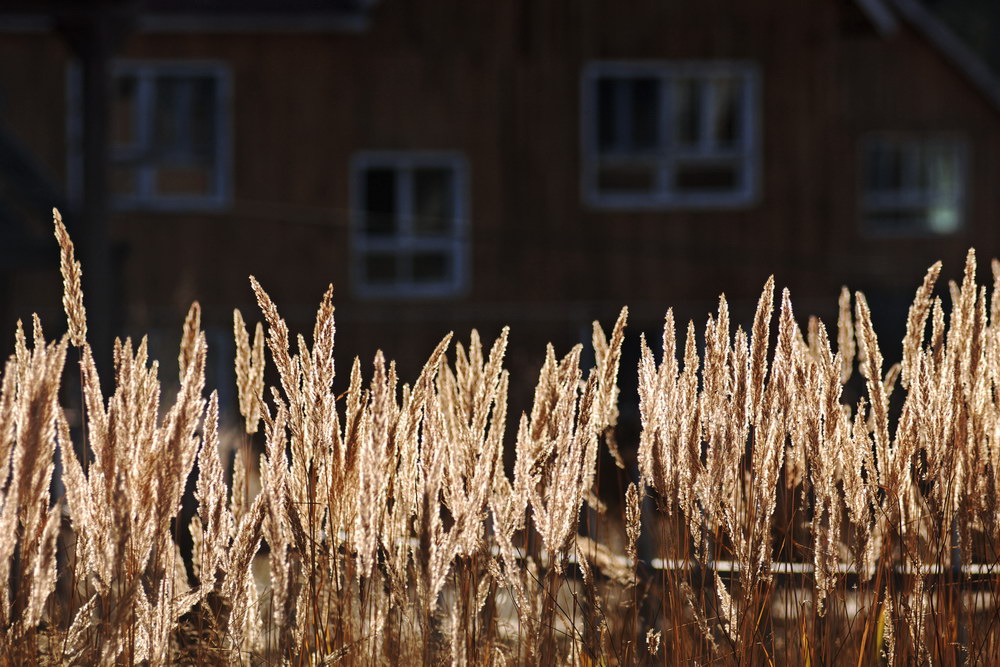
Centre weighted metering, Daylight White Balance, ISO100, Aperture Priority Mode, Shutter speed 1/750s, Aperture f3.5, 18-200mm
Taken in Northern Xinjiang, China. I am not sure what species of Lalang (if it is Lalang in the first place) is this, but what attracted me is how they glow under the back light. For Singapore, not to be missed will be our national flower Vanda Miss Joaquim orchid plant. There are many species of fungus, floral and fauna all over the world. If you can, try to photograph a few.
Transport
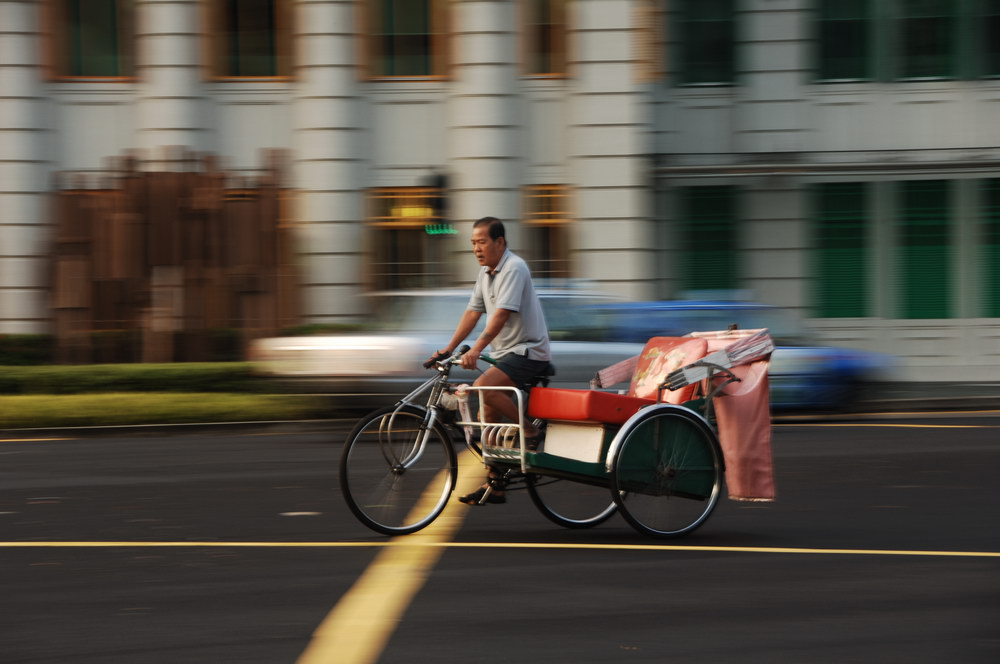
Centre Weighted metering, Daylight White Balance, ISO100, Shutter Priority Mode, Shutter speed 1/15s, Aperture f6.7, 18-200mm
For Singapore, one of our unique transports will be the trishaw. The rickshaws are long “extinct”. Though the trishaws are now mainly used to ferry tourists, you will be surprised that they do fetch some locals for short distances. Even our trolley buses, Duck tours etc are worth photographing. It will be a surprise also to find out whether you know how many taxi companies we have in Singapore now. Do this likewise when you are in other country and see what are their transports systems.
Night Lights
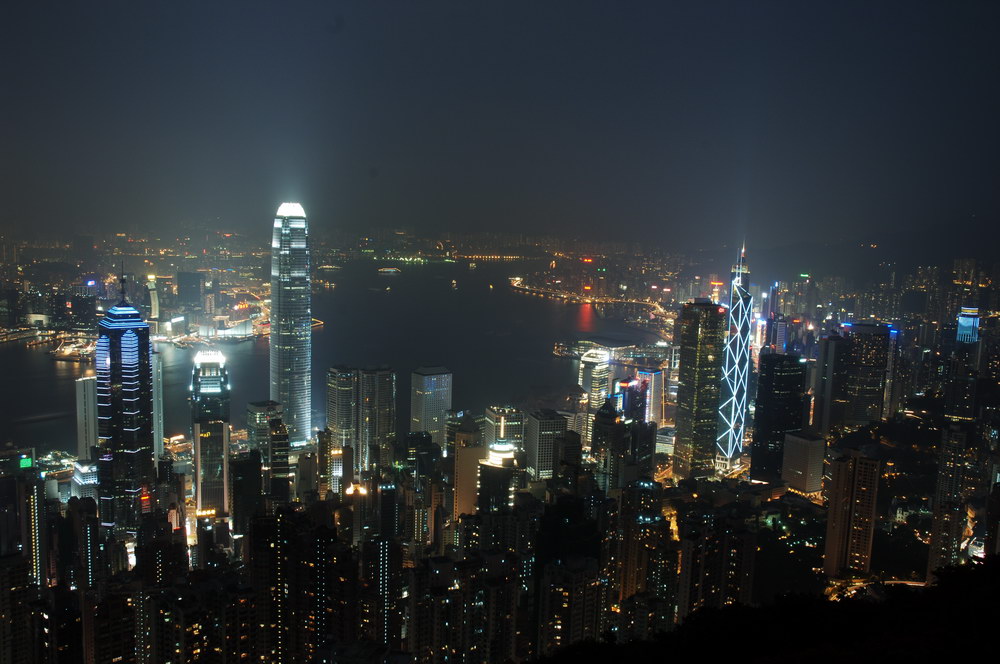
Centre Weighted metering, Daylight White Balance, ISO100, Aperture Priority Mode, Shutter speed 14 s, Aperture f9, 18-200mm
Look at brochures, internet resources and books and do not miss night scenes of the country you are visiting. This picture was taken at the Peak in Hong Kong.
Leisure and sports
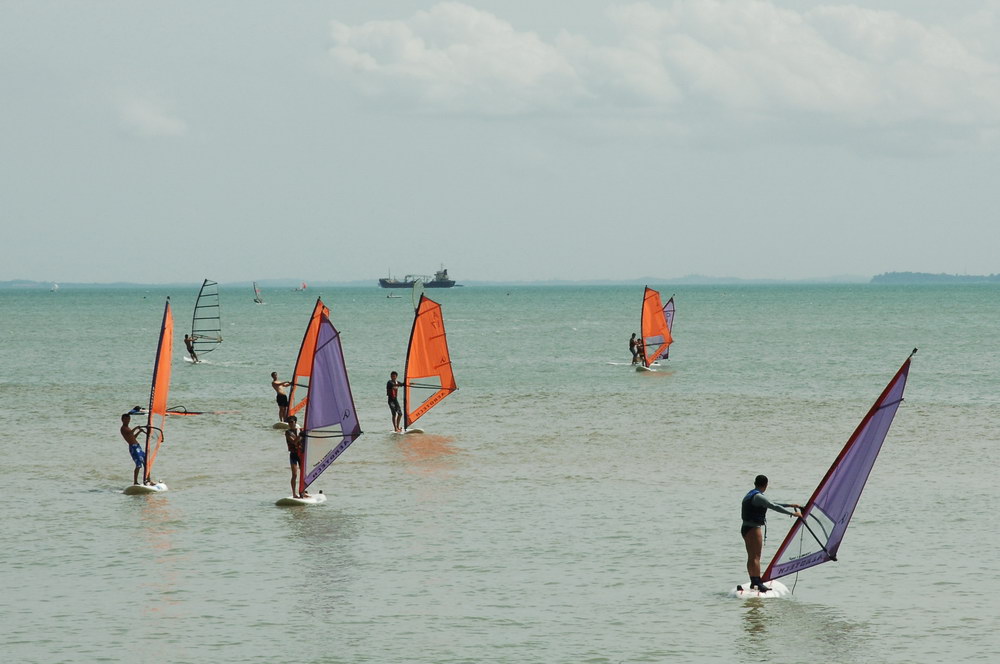
Matrix metering, Daylight White Balance, ISO320, Program Mode, Shutter speed 1/640s, Aperture f12, 18-200mm
Taken from the Changi Sailing Club, this picture shows some of our local favourite sea sports. One can easily find out from guide books on the locals’ favourite or unique leisure life and sports.
Scenery & landscape
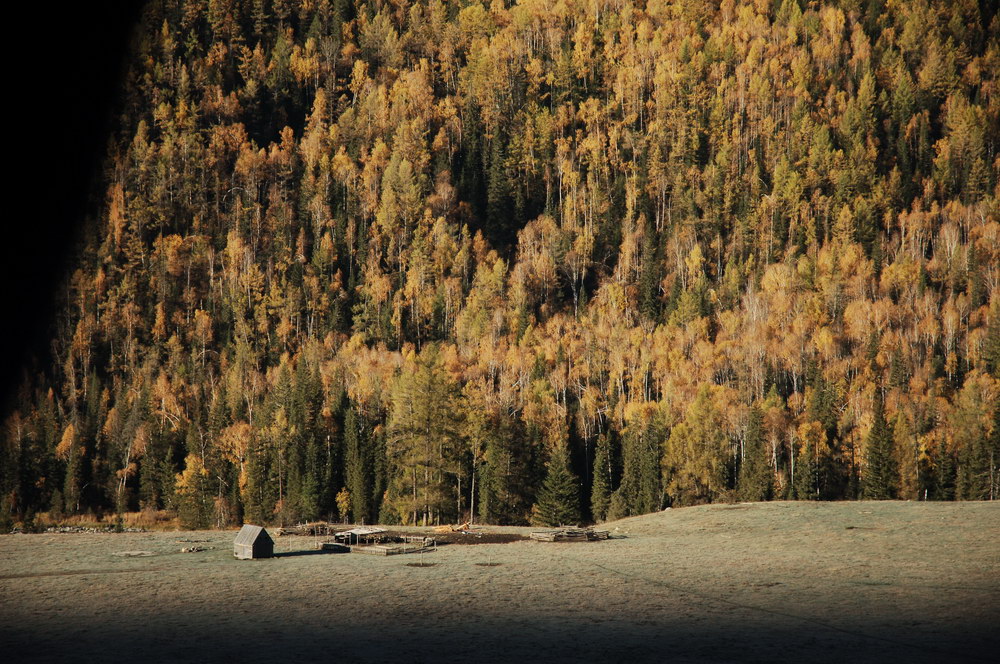
Centre Weighted metering, Daylight White Balance, ISO320, Aperture Priority Mode, Shutter speed 1/1000s, Aperture f4.5, 18-200mm, EV -0.3
What attracted me to photograph this picture is how the cloud formation cast shadow and highlight on the trees. This was taken in Northern Xinjiang, China, along the road. I shot this through the window of the moving bus.
Motifs
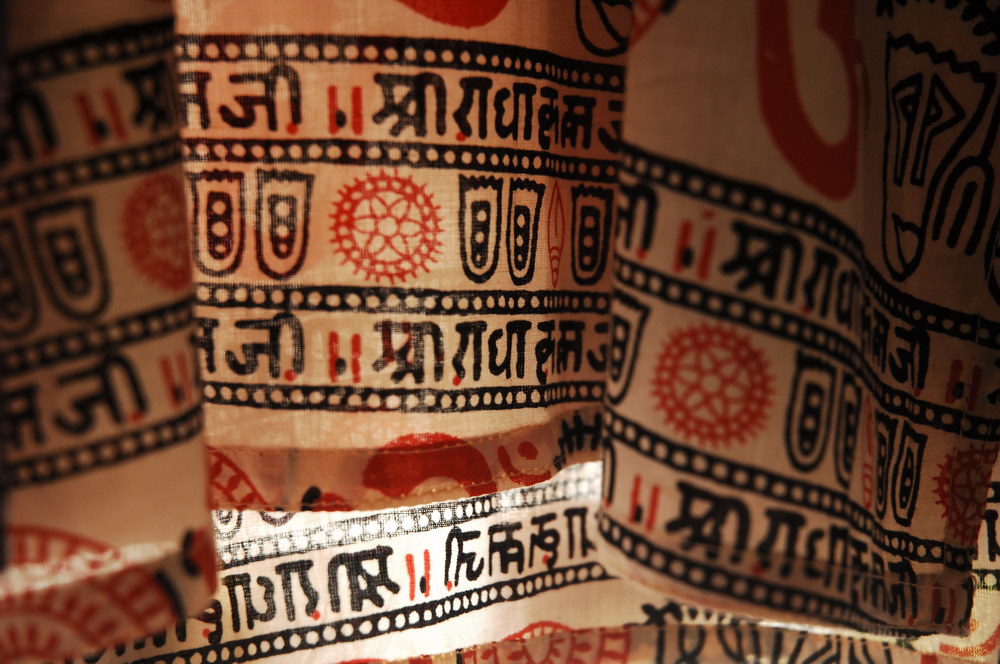
Centre Weighted metering, Daylight White Balance, ISO400, Aperture Priority Mode, Shutter speed 1/50s, Aperture f4.5, 18-200mm
Look out for motifs or patterns on the cloth, textile, walls of places of religion and you can see how the motifs reflect the culture of a place.
Religion
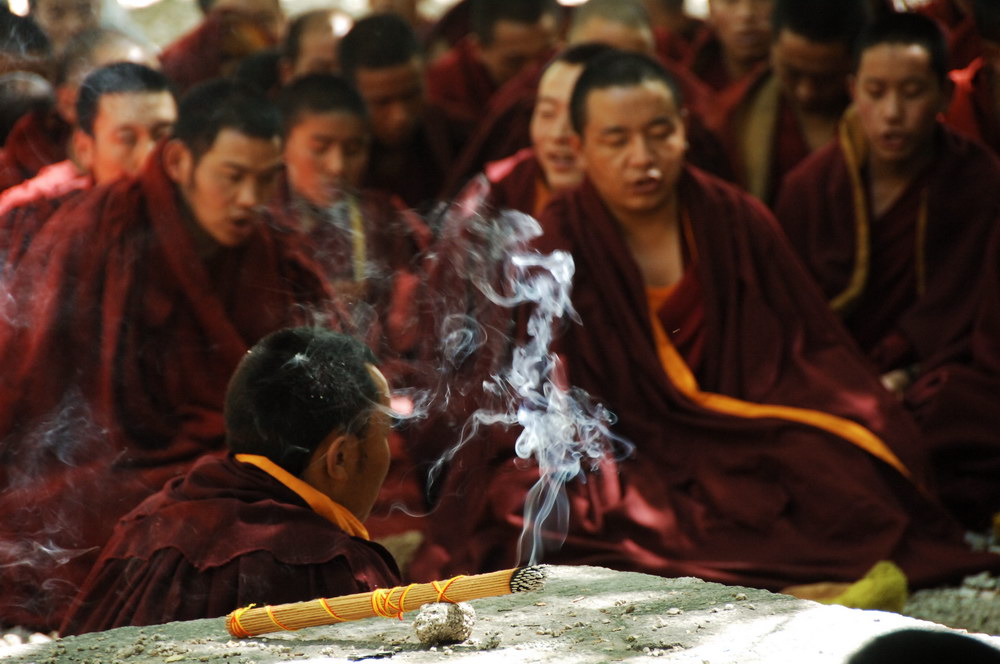
Centre Weighted metering, Daylight White Balance, ISO800, Aperture Priority Mode, Shutter speed 1/60s, Aperture f5.6, 18-200mm, EV -0.7
Taken in Tibet, the monks were chanting and the burning incense added a feeling of spirituality to the image.
Places of interest and landmark
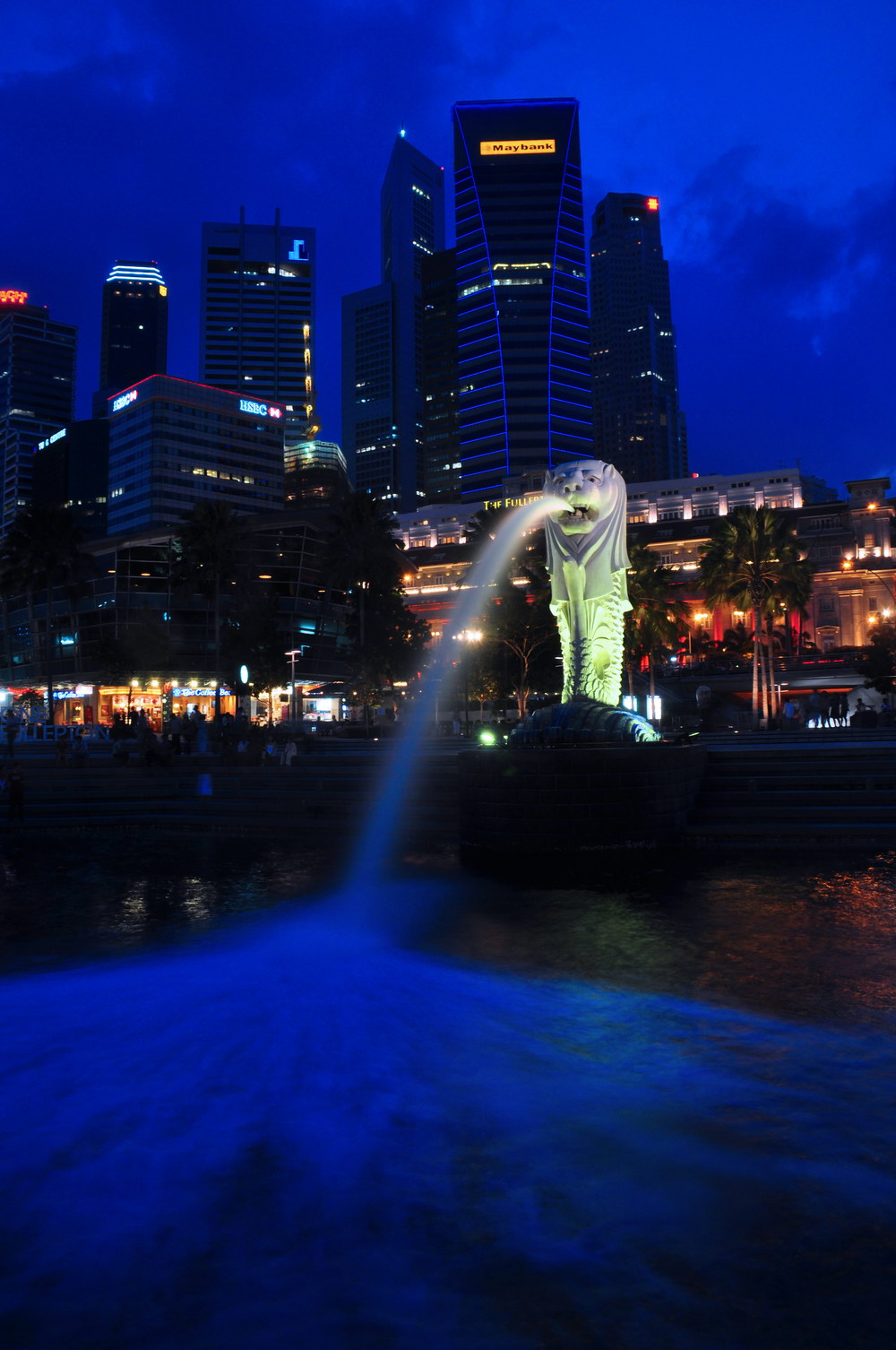
Matrix metering, Auto White Balance, ISO200, Aperture Priority Mode, Shutter speed 2 s, Aperture f11, 18-200mm, EV -0.7
When we mention places of interest and landmark in Singapore, one of the very first thing that comes to one’s mind would be the Merlion, the Raffles Hotel, the Esplanade etc. Every country has some places of interest and landmark. These are things that you should not miss.
Small things and signages
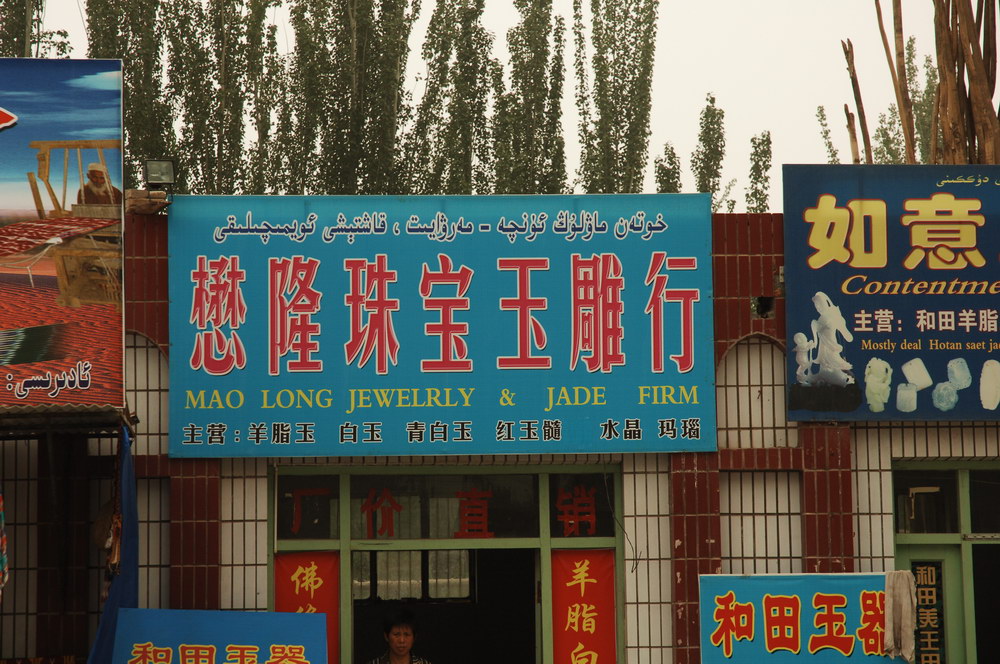
Centre Weighted metering, Daylight White Balance, ISO320, Program Mode, Shutter speed 1/250s, Aperture f7.6, 18-200mm
Signage can tell a story of a place, be it the products or local specialty. No doubt English language is a universal language in many countries; you may expect to see some amusing texts on the signboards in certain places. These are images worth collecting.
Alleys

Centre Weighted metering, ISO400, Aperture Priority Mode, Shutter speed 1/1000s, Aperture f5.3, 18-200mm, EV -0.7
If you not travelling alone, you may like to explore the alley and back lanes where you can find some interesting objects such as abandoned stuff, people feeding the animals and others. But do be careful if you are doing so alone, as the very last thing you want to happen to you is getting mobbed at the alley.
Souvenirs and handicrafts
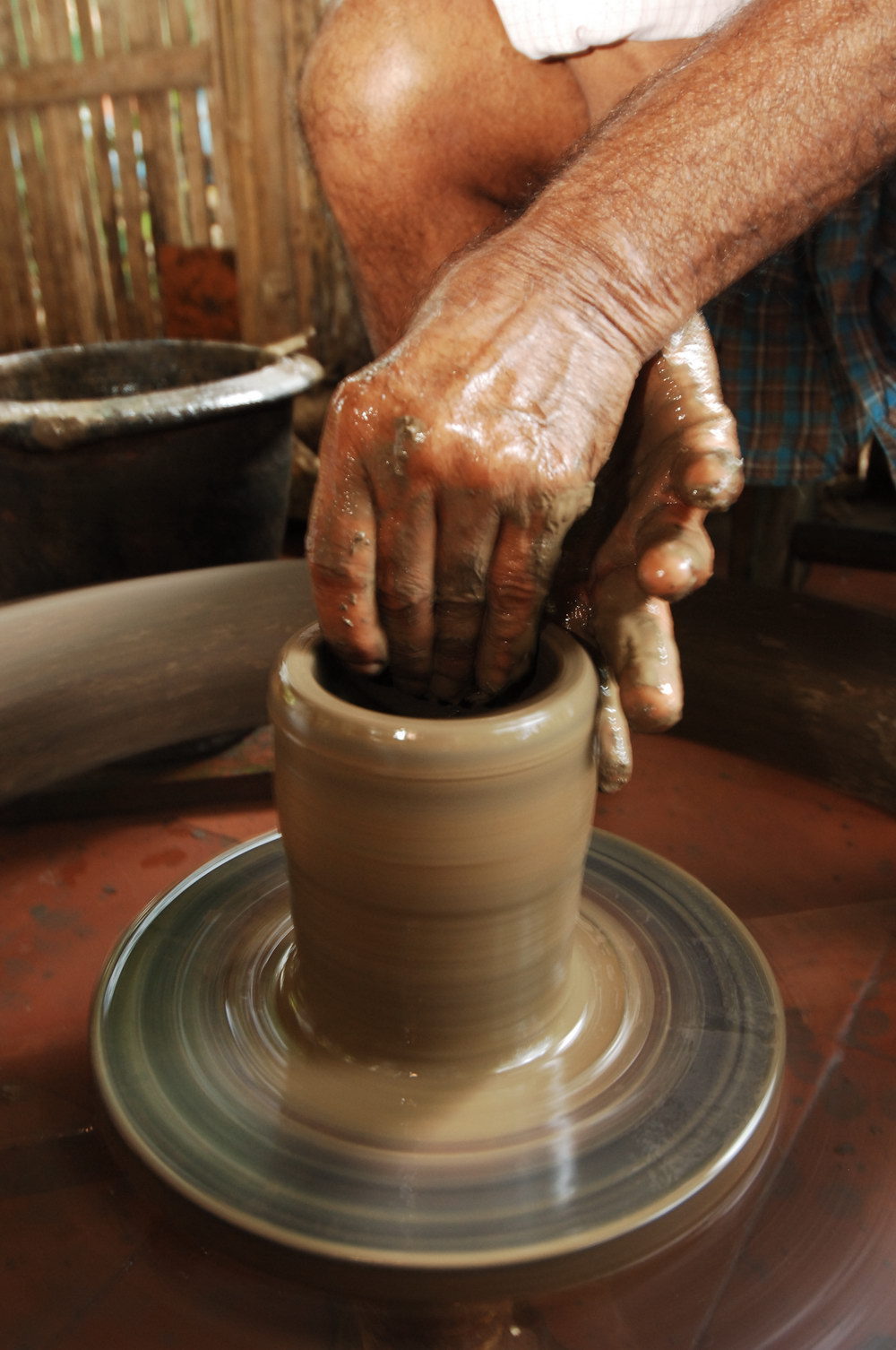
Centre Weighted metering, Daylight White Balance, ISO400, Progra, Mode, Shutter speed 1/6s, Aperture f5.6, 18-200mm
Handicraft workshops or souvenir showroom are often shunned by some photographers who believe that these are places mainly for tourists. What they may not realize is behind the scenes, especially in the workshop, you can expect to see many interesting activities such as the production of the handicraft and souvenir. This picture was taken at the back of a souvenir shop that sells pottery. I asked the worker to help do a demonstration after seeking permission from the shop manager.
Cultural performance
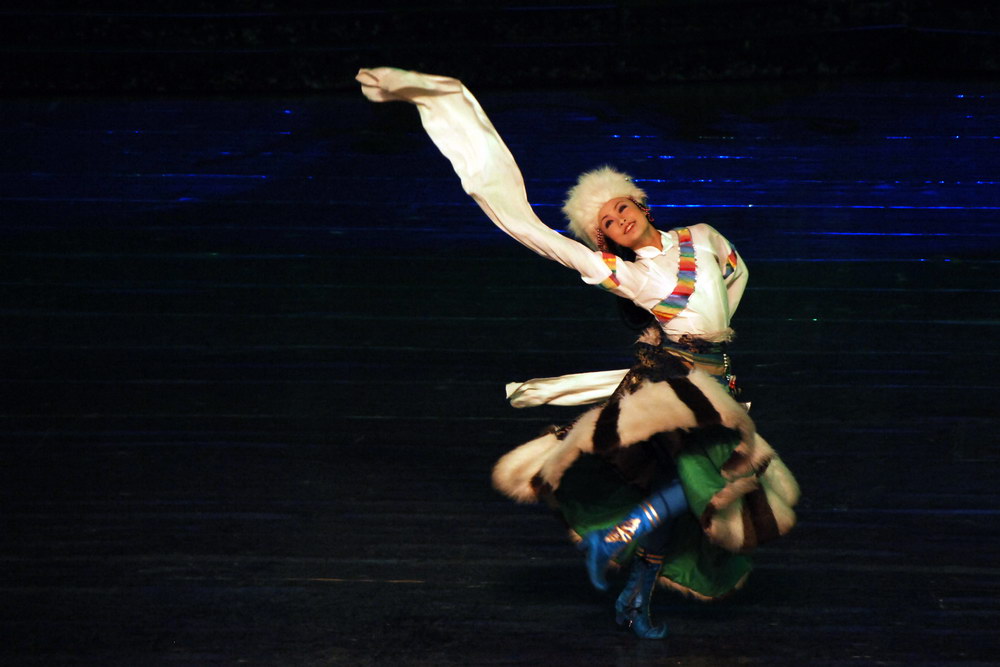
Centre Weighted metering, Auto White Balance, ISO800, Manual Mode, Shutter speed 1/200s, Aperture f5.6, 18-200mm
Do not miss those cultural performances. Many travelers avoided cultural performance because they thought these are nothing but commercialized performances. However, if you do manage to attend a good performance with authentic setups, you will be able to thoroughly enjoy the essence of the local cultural flavour. No harm trying.
Animals
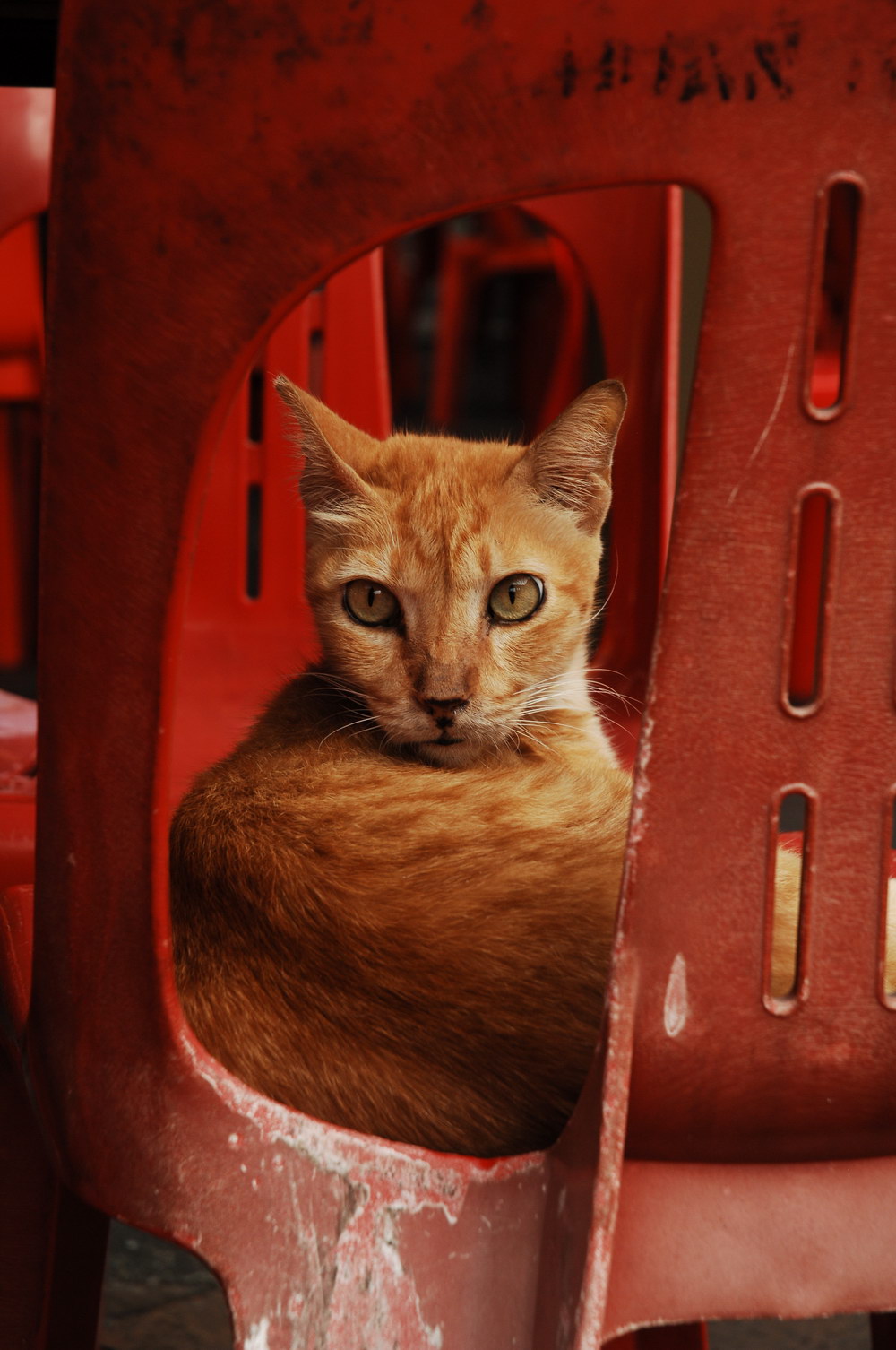
Matrix metering, Daylight White Balance, ISO320, Program Mode, Shutter speed 1/200s, Aperture f7.1, 18-200mm
Stray cats, wild birds, any creatures which are unique to the country and that roam the streets or territory of the place deserve a place in your travel portfolio of images.


